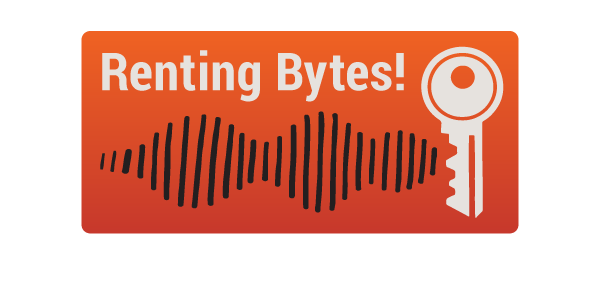Housing Australia, the Accord and others ways the government wants to boost supply of housing.
Zuzia Buszewicz • 29/01/2024
Re-joining the Tenants’ Union at the end of 2023 allowed me to jump back into the details of the ongoing housing and rental crisis in Australia and NSW and investigate the mechanisms recently put in place by the federal government to help abate it.
In December 2023, the Senate inquiry into The worsening rental crisis in Australia published its final report. This report is a helpful starting point for my investigations, as it summarises the current situation based on advice from the sector’s best-informed researchers, peak bodies, and community organisations. The report opens with a recap of the current and forecasted social housing need estimates, ‘The Australian Institute of Health and Welfare estimated that there were around 442,700 social housing dwellings across Australia as of June 2022.’; while the shortfall was estimated to be as high as 727,300 by 2036. We were part of a joint statement of more than 80 organisations that called for investment: 'Governments should aim for investment consistent with meeting a target of a minimum 10 per cent of all housing being public or community housing by 2036.'
With the size of the estimated need for social and affordable housing nationally confirmed, I moved to investigate the newest solutions introduced by the federal government to provide relief in the housing crisis.
First, I looked into the HAFF, the highly anticipated and, at points, feverishly debated Housing Australia Future Fund. HAFF is a funding mechanism promising to deliver 30,000 new affordable rental homes in its first five years. Specifically, it is a $10 billion investment fund established by the Federal Government and managed by the Future Fund. The Housing Australia Future Fund Act 2023 (the HAFF Act) outlines that $500 million will be disbursed each financial year from 2024–25 to 2028–29.
Of the anticipated 30,000 new affordable homes, the government intends to allocate:
‘20,000 homes for social housing (of which 4,000 would be for ‘women and children leaving or experiencing domestic and family violence and older women on low incomes who are at risk of homelessness’); and 10,000 ‘affordable homes for frontline workers like police, nurses and cleaners’.
As in the case of all complex, long-term commitments (like those outlined by the HAFF Act 2023), questions and concerns may arise upon closer investigation of the text. Such as those raised in the submission to the rental crisis Senate inquiry by Anglicare Australia. The submission points out that:
The Federal Government … 'will only guarantee that the [HAFF] will deliver a minimum of 9,600 homes, or 30,000 homes in the most generous scenario. This is a long way away from Australia’s 640,000 home shortfall [current national social housing waitlist]. After years of under-investment in social housing... Turning this around will require regular, on-budget commitments well beyond the proposed [HAFF]’
Assuming the ‘most generous scenario’ is feasible, I decided to investigate how the income generated by the Housing Australia Future Fund will be disbursed to facilitate the building of new social and affordable homes.
To do that, I looked closer at the body tasked with managing the funds, ie. Housing Australia.
Formerly known as the National Housing Finance and Investment Corporation (NHFIC), Housing Australia is the national body responsible for disbursing the credits generated by the Housing Australia Future Fund and delivered to the Housing Australia Future Fund Facility (HAFFF).
According to its dedicated website, Housing Australia will be responsible for delivering 30,000 new social and affordable rental homes in the first five years of the HAFF and 10,000 affordable rental homes as a part of the National Housing Accord, originally agreed in 2022 and updated in 2023.
The Accord is an agreement between all levels of government, brought about by the urgent need to reduce housing stress and increase rental affordability. Designed to create a sustainable pipeline of additional housing, the Accord aims to help local councils, states and territories expedite zoning, planning and the release of land while also supporting private investment in housing development and assisting the construction sector. Its target for all types of housing is 1.2 million new homes over 5 years, with the vast majority of that housing intended to be funded and built by the private market, and as such, initially criticised for being not much more than the private market had built in the preceding 5 years.
Under the Accord (delivered by Housing Australia via an instrument called the National Housing Accord Facility), the states and territories committed to matching the 10,000 affordable dwellings delivered by the federal government, bringing the total aspirational number of new affordable rental homes to 20,000 over five years from 2024. The combined housing investment through the Accord is estimated at $700m.
Another scheme under the Housing Australia umbrella is the Affordable Housing Bond Aggregator (AHBA). Also designed to assist with boosting the supply of social housing, the Aggregator provides eligible community housing with access to low-cost, long–term loans to maintain existing housing stock and finance the acquisition or construction of new housing stock, refinance existing debts or meet working capital requirements and/or general corporate requirements. The anticipated number of new dwellings through the AHBA scheme is 7,000.
Finally, Housing Australia is also responsible for loans and grants supporting new social and affordable housing as part of ‘critical infrastructure’. These funds were allocated to secure the Greens' support for the HAAF Bill in Parliament at the end of 2023. The pool of funds available through the National Housing Infrastructure Facility Social and Affordable Housing (NHIF SAH) is $1 billion. It is available for projects by community housing providers, local, state and territory governments and appropriate incorporated bodies. NHIF SAH scheme covers new social and affordable housing builds, acquisitions of existing housing stock and conversion and some mixed tenure developments.
Beyond the remit of Housing Australia, the federal Treasury is financing the Social Housing Accelerator scheme, which works at the state and territory levels.12 The initiative, aimed at reducing the number of people on social housing waitlists, has already distributed $2 billion in funding among the states and territories to permanently boost the total national social housing stock by 4,000 homes.
The Accelerator is designed to deliver on its targets flexibly, including new builds, expanding programs, and renovating or refurbishing existing but uninhabitable stock. In the case of NSW, the Accelerator is estimated to deliver 1,500 new dwellings by 2029,
‘dampening … the wait list numbers by around 3%. Median wait time for newly allocated households in public housing would reduce by an estimated 2 days against a baseline of 2 months, all other factors remaining equal.’
The above initiatives will be further supported by the one-year $1.7 billion extension of the National Housing and Homelessness Agreement with states and territories, including a $67.5 million boost to homelessness funding in 2024.
NHFIC’s (now Housing Australia) 2023 forecast estimated that 1.7 million new occupied households would built in Australia by 2033. Its State of the Nation’s Housing Report 2022–23 outlined the issues impeding the development and delivery of new homes, including bad weather, building materials shortages and zoning restrictions. The subsequent investment schemes by the government aim to address some of these issues, in particular the planning, zoning and land release.
Even including a $3 billion New Homes Bonus for states that exceed their target and $500 million in a Housing Support Program to support councils in delivering their new housing commitments, the federal funding spent on smoothing the development, speeding up the delivery of new housing supply and boosting social and affordable housing stock remains far behind the government spending on negative gearing tax concessions and capital gain tax exemptions for landlords and the Commonwealth Rent Assistance.
We should be asking whether we are spending with a sensible strategy - what housing outcomes are actually being delivered through those $70bn in tax breaks. Everybody's Home calculated that around $24,010 per rental property each year is being spent on foregoing revenue - that's more than the cost of just paying the rent for most Australian rental homes.
From the perspective of renters, the scale of the funds committed toward the federal government's 1.2 million homes by 2030 housing agenda via HAFF, the Accord, the Accelerator and NHIF SAH is a step in the right direction likely to partially assist with increasing public, community and 'Affordable' housing supply.
However, given that the direct spending on housing infrastructure constitutes the smallest part of the government’s housing expenditure, and considering that the number of completed and commenced builds has declined over the past years, it remains to be seen if Housing Australia and the state and territory governments can reach their new affordable and social rental homes targets. What is certain is that the Tenants’ Union of NSW and many others will be keeping a close eye on the developments and will continue to advocate for a fairer, safer, and more secure renting experience for all. Renters need to see real changes in the real world to their experience, and that will ultimately be the way any government's strategies are judged.
Further reading:
Everybody's Home Written Off: The high cost of Australia’s unfair tax system
Hal Pawson's The Conversation article discussing the government's 1 million homes goal
Per Capita January 2024 On Whose account? report on the government's spending on housing
Teaser image by Freepik.com




